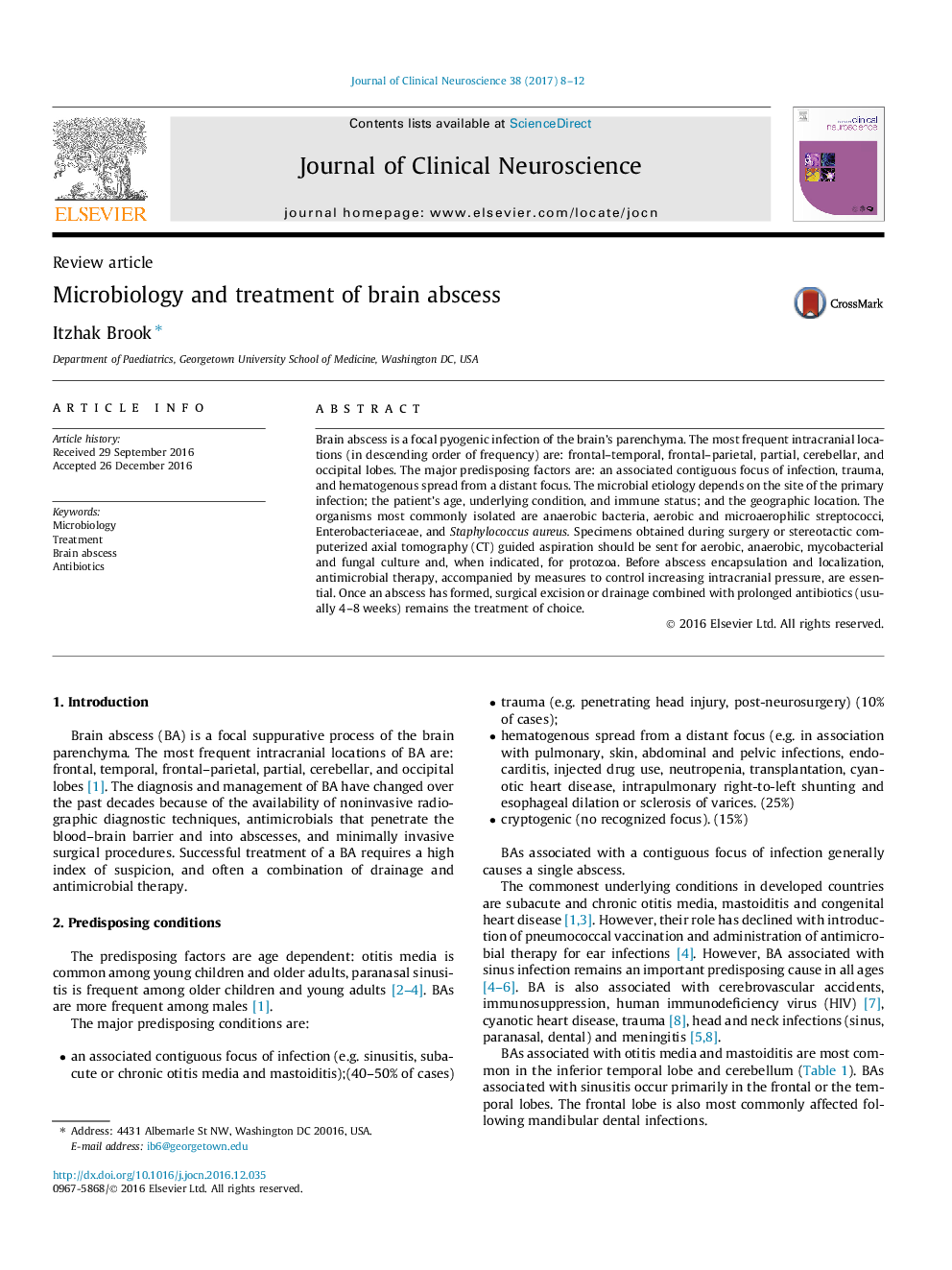| کد مقاله | کد نشریه | سال انتشار | مقاله انگلیسی | نسخه تمام متن |
|---|---|---|---|---|
| 5629782 | 1580278 | 2017 | 5 صفحه PDF | دانلود رایگان |
- The major predisposing factors for brain abscess are: a contiguous focus of infection, trauma, and hematogenous spread.
- The microbial etiology depends on the site of the primary infection, age, underlying conditions, immune status, and the geography.
- The commonest isolated bacteria are anaerobic, aerobic and microaerophilic streptococci, Enterobacteriaceae, and S. aureus.
- Before encapsulation and localization, antimicrobials and control of intracranial pressure, are essential.
- After abscess has formed, surgical excision or drainage and prolonged antibiotics (4-8Â weeks) is the treatment of choice.
Brain abscess is a focal pyogenic infection of the brain's parenchyma. The most frequent intracranial locations (in descending order of frequency) are: frontal-temporal, frontal-parietal, partial, cerebellar, and occipital lobes. The major predisposing factors are: an associated contiguous focus of infection, trauma, and hematogenous spread from a distant focus. The microbial etiology depends on the site of the primary infection; the patient's age, underlying condition, and immune status; and the geographic location. The organisms most commonly isolated are anaerobic bacteria, aerobic and microaerophilic streptococci, Enterobacteriaceae, and Staphylococcus aureus. Specimens obtained during surgery or stereotactic computerized axial tomography (CT) guided aspiration should be sent for aerobic, anaerobic, mycobacterial and fungal culture and, when indicated, for protozoa. Before abscess encapsulation and localization, antimicrobial therapy, accompanied by measures to control increasing intracranial pressure, are essential. Once an abscess has formed, surgical excision or drainage combined with prolonged antibiotics (usually 4-8Â weeks) remains the treatment of choice.
Journal: Journal of Clinical Neuroscience - Volume 38, April 2017, Pages 8-12
